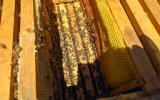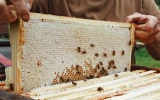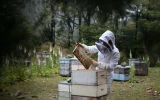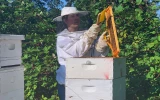Reuse Beehive Frame Easily & Safely (5 Easy Steps)
The appropriate maintenance of the beehive frames is one of the most crucial duties in beekeeping. However, there is a quick and secure way to achieve this without constantly changing the frames. We'll outline five simple steps in this article to make it simple and safe for you to reuse your beehive frames.
To reuse a beehive frame, first clean the frames with mild soap and hot water. Then, inspect the frames for signs of damage or decay, and replace any damaged parts. Next, apply a thin layer of beeswax to the frames to help seal them. Then, repaint the frames with a light coat of paint.
With these few simple steps, you can save money, reduce waste, and ensure that your beehive will remain healthy and productive for years to come. Now, let's know more about the safety precautions to take before reusing a beehive and the benefits that you can gain from safely reusing one.
Summary
- Replacing any broken parts can help ensure the health and safety of the hive.
- When repainting, use paint that is specifically designed for use on beehive frames, as other types of paint may be toxic to the bees.
- By reusing existing beehive frames, beekeepers can help conserve resources and minimize waste.
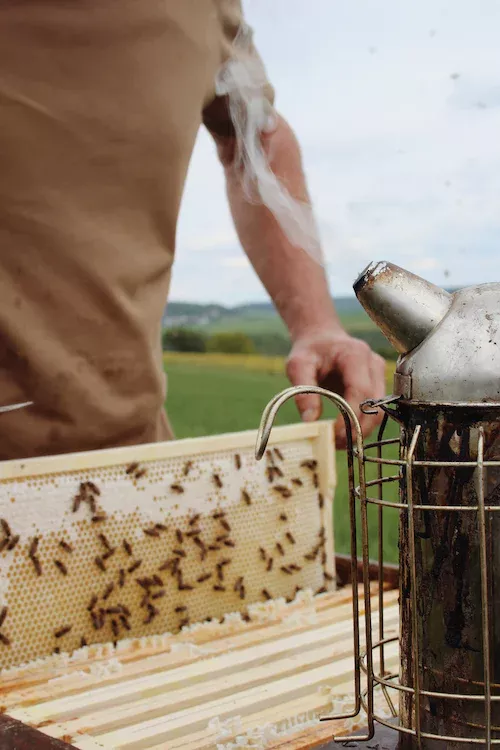
On this page:
5 Easy Steps To Reuse Beehive Frame Easily and Safely
Reusing beehive frames can be a great way to reduce costs and help the environment. Following these five simple steps will ensure that you can safely and easily reuse your beehive frames.
1. Clean the frames with mild soap and hot water
Before putting the frames back into the hive when they are reused, it is crucial to provide them with the necessary cleaning. Cleaning the frames helps prevent the spread of disease and parasites between colonies and can also help remove any debris or residual wax that may have been left behind from the previous use of the frames.
To clean the beehive frames:
- Start by using gentle soap and hot water to remove any debris or wax
- Allow the frames to soak for several minutes before scrubbing them with a soft brush or a cloth
- Once the frames have been cleaned, rinse them off with clean, hot water
- Allow them to air dry completely before placing them back into the hive
Propolis or wax buildup on the frame should be gently scraped off. When cleaning a plastic frame, warm, soapy water should be used.
2. Inspect the frames for signs of damage or decay
Before utilizing beehive frames again, it is crucial to check them for symptoms of deterioration or decay. A strong and healthy hive can be ensured by frames that are in good shape.
When inspecting beehive frames, look out for:
- Signs of damage such as cracks, splits, or warping
- Frames that are too damaged should not be reused
- Frames that have been exposed to elements such as rain or snow can become warped and should be replaced.
- Signs of decay such as mold, mildew, or rot. If any of these are present, the frames should be discarded and replaced.
- Signs of wax moth damage. Wax moths are small insects that feed on the wax in beehive frames and can cause significant damage over time. If there are signs of wax moth damage, the frames should be discarded and replaced.
- Signs of pest infestation. Pests such as ants and beetles can cause significant damage to the frames and should be dealt with immediately.
- Signs of rust or corrosion. If the frames are rusty or corroded, they should not be reused.
3. Replace any damaged parts of the beehive
Before utilizing the frames again, any damaged components must be changed. Broken wooden pieces, warped parts, and fractured or missing pieces are all examples of damaged components. For the bees' protection, it is crucial to replace any damaged components of the frames.
Damaged frames can be a source of mites and other pests and can cause injury to the bees. Replacing any broken parts can help ensure the health and safety of the hive. When replacing the damaged parts, it is important to use the same type of material as the original frame.
For example, if the frame is made of wood, it should be replaced with wood, and if it is made of plastic, it should be replaced with plastic. It is also important to use the same measurements as the original frame.
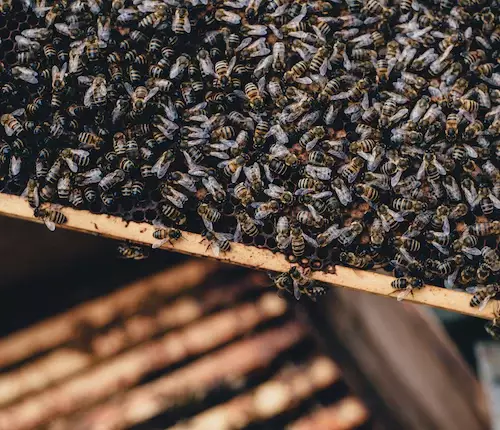
4. Apply a thin layer of beeswax to the frames to help seal them
Applying a thin layer of beeswax to beehive frames before reusing them is an important step in beekeeping. Beeswax helps to seal out moisture and protect the frame from damage. It can also help reduce the amount of time and effort required to scrape off old wax and propolis when the frame is being reused.
Beeswax also helps to create a barrier between the bees and the wood, which helps to prevent the wood from warping or becoming damaged. Additionally, it helps to reduce the amount of debris and debris buildup that can occur on the frames. Applying a thin layer of beeswax is an easy and effective way to ensure that your frames are ready for reuse.
5. Repaint the frames with a light coat of paint to help protect them from the elements
It is a good idea to repaint beehive frames with a light coat of paint before reusing them. This will help protect them from the elements and keep them in good condition for longer.
- The paint will act as a barrier against moisture, dirt, and other environmental factors that can cause damage to the frames over time.
- The paint will help protect the frames from pests and disease-causing organisms that can harm the bees or their honey.
- The paint will make the frames simpler to clean and help keep them looking nice and appealing.
Applying too much paint can make the frames too heavy for the bees to lift and move, so it's crucial to employ a gentle hand. Also, because other forms of paint could be poisonous to bees, it's crucial to choose a paint that is made expressly for use on beehive frames.
Safety Considerations for Reusing Beehive Frames
When reusing beehive frames, it is important to take safety precautions to ensure the safety of both the beekeeper and the bees.
- Be sure to wear proper protective gear when working with beehive frames, such as a bee veil, gloves, and a long-sleeved shirt and pants.
- Inspect the frame for any signs of damage before attempting to reuse it. Frames that are cracked or otherwise damaged should be discarded.
- Check for signs of disease, such as mold and mildew, and dispose of any frames that may have been contaminated.
- If the frame has been used before, be sure to clean it thoroughly and disinfect it with a solution containing 1 part bleach to 9 parts water.
- A frame that has been used for more than one season should not be used because the bees may have contracted diseases like chalkbrood that can spread to other frames.
- Keep the frames away from direct sunlight to protect the bees from overheating.
- If you are reusing frames from a hive that has been treated with chemicals, be sure to clean and disinfect the frames before reusing them.
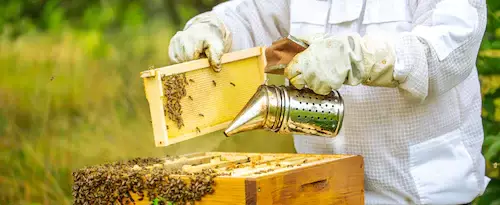
Benefits of Reusing Beehive Frame
Reusing beehive frames offers many benefits to beekeepers.
- Reusing frames can help reduce the cost of beekeeping. By reusing old frames, beekeepers can save money on the cost of purchasing new frames.
- Reusing frames can help promote sustainability. By reusing existing frames, beekeepers can help reduce the need for new materials and resources.
- Reusing frames can help improve the health of the hive. By using frames that have already been exposed to the bees, beekeepers can help reduce the risk of introducing new diseases or pests into the hive.
- Reusing frames can help reduce the environmental impact of beekeeping.
